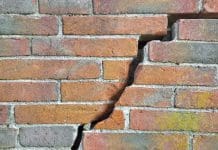Alan Somerville, head of the Building Performance Group and executive director at BRE, outlines how the measurement of asset performance within the wider context of environmental, social and corporate governance (ESG) and delivers long-term value
Since we spend an average of 90% of our time indoors and the world’s existing building stock is recognised as accounting for 40% of all carbon emissions generated globally, it is never a more important time for building owners, investors, asset managers and other involved stakeholders to take steps towards gaining an understanding of asset performance.
One of the last political actions of our former Prime Minister, Theresa May, has been to sanction a legally binding net-zero greenhouse gas emissions target of 2050 for the UK (previously an 80% reduction) based on recommendations from the Committee on Climate Change. The UK is therefore set to become the first G7 country with this net-zero aim, aligning with the Paris 2015 climate change agreement.
Other countries have made similar pledges, some of which even bettering that of the recently publicised UK target – our closest Scandinavian counterparts Norway and Sweden both posting legislated pre-2050 figures of 2030 and 2045 respectively, albeit being strong renewable energy nations.
Consequently, there is heightened pressure on the industry to contribute towards emission reduction efforts. In order to meet (and exceed) national and international targets, every industry and every sector is required to play its part in some shape or form. Actions speak louder than words and the question is how does the UK and other nations accomplish the task at hand?
Identifying improvements to assist with the ongoing management of buildings in their operational phase of life is crucial for knowing which sustainably-positive enhancements to apply and how strategies can be implemented for mid/long-term future-proofing.
Mechanisms of change
ESG is rapidly transitioning from just ‘another risk to be managed’ to a driver that is informing company strategy for long-term growth. Companies and their products and services are being challenged to serve a social purpose. Stakeholders, and more importantly shareholders, are not only measuring companies according to financial performance but also how they make a positive societal contribution.
Global real estate investors and occupiers are responding to these macro issues, and the measurement of ESG indicators has become a major gamechanger in the market. Now, not only traditional financial metrics are reported and utilised but also financial metrics explicitly linked to climate-related risk (through the Task Force on Climate-related Financial Disclosures [TCFD) implementation), responsible investment strategies and wellbeing.
It appears that much more of a holistic view is taken when deciding where to distribute money – investments that contribute to the wider society both directly and indirectly. Asset management of buildings therefore inherently faces growing levels of scrutiny in order to ensure a certain level of continual performance.
Within the built environment sector, it is increasingly understood that both sustainability-related objectives and elements of ESG are being incorporated into portfolio and asset-level decision making.
Added value
Sustainability is a key element of green building certifications and is woven into the very fabric of environmental assessment methodologies such as BREEAM. Historically, BREEAM has been driven by central government procurement and planning policy, however, we are progressively observing its use for ESG rating purposes and benchmarking of performance at asset-level and across portfolios through schemes such as BREEAM In-Use. More than just ‘ticking a box’, BREEAM helps companies manage their risk and in turn support delivery of long-term value for their customers.
BREEAM has the ability to give investors the information they need to make better decisions, and the expectation towards certified ESG performance with the same rigour as financial data will continue to unfold. Certification is increasingly seen as a risk assessment and mitigation practice – understanding the performance and communicating it transparently allows the risks to be managed.
Global investors want global benchmarks for the purpose of gaining visibility on how their buildings’ performance is portrayed in an international context. BREEAM’s basis in sound, robust science, along with independent and objective assessments through certified third parties, helps clients, investors and other stakeholders to outline and mitigate the risks.
Without this transparency, it is more difficult to identify which assets within a portfolio or which areas of a building need more attention. Beyond this, positive actions can be and are achieved through a cycle of monitoring, enhancement planning and improvement. There are many synonymous reasons why undertaking an independent third-party assessment process can complement ongoing asset management. A secondary, but equally beneficial, factor is the driver of assurance.
The foundation of good assurance is a good standard and standards are easy to write but more difficult to perfect. BREEAM isn’t perfect and one size does not fit all but as the market has matured, so has the standard; it’s a constant cycle of adjustment and revision. The standard evolves in response to the market and the market and solutions evolve in response to the standard.
Market transformation and innovation is one of the key drivers for assurance and therefore BREEAM certification. Third-party certification adds value because it gives customers and consumers’ confidence in claims about performance.
Summary
The industry and related markets are shifting focus – climate change and its associated environmental impacts are forcing global real estate to redefine value and more actively manage assets and portfolios. Buildings of the future need to be fit for adaptation to withstand the changing world landscape over the next decade and beyond, and this is ultimately questioning the very nature of our building usage and their longevity.
The use of global benchmarks and certification schemes to measure and report sustainability performance are crucial to addressing climate change, ensuring value for investors, occupiers and the end building users. Utilising methods of assessing and evaluating building construction and operational performance is one way to protect investments and ultimately safeguard our living communities looking into the future.

Alan Somerville
Executive Director
BRE
Tel: +44 (0)333 321 8811
enquiries@bregroup.com
Additional contribution to this article by Sam Turner, technical consultant, BREEAM

















